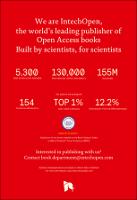Chapter Fast-Spectrum Fluoride Molten Salt Reactor (FFMSR) with Ultimately Reduced Radiotoxicity of Nuclear Wastes
Abstract
A mixture of NaF-KF-UF4 eutectic and NaF-KF-TRUF3 eutectic containing heavy elements as much as 2.8 g/cc makes a fast-spectrum molten salt reactor based upon the U-Pu cycle available without a blanket. It does not object breeding but a stable operation without fissile makeup under practical contingencies. It is highly integrated with online dry chemical processes based on “selective oxide precipitation” to create a U-Pu cycle to provide as low as 0.01% leakage of TRU and nominated as the FFMSR. This certifies that the radiotoxicity of HLW for 1500 effective full power days (EFPD) operation can be equivalent to 405 tons of depleted uranium after 500 years cooling without Partition and Transmutation (P&T). A certain amount of U-TRU mixture recovered from LWR spent fuel is loaded after the initial criticality until U-Pu equilibrium but the fixed amount of 238U only thereafter. The TRU inventory in an FFMSR stays at an equilibrium perpetually. Accumulation of spent fuel of an LWR for 55 years should afford to start up the identical thermal capacity of FFMSR and to keep operation hypothetically until running out of 238U. Full deployment of the FFMSR should make the entire fuel cycle infrastructures needless except the HLW disposal site.
Keywords
fast-spectrum fluoride molten salt reactor, high-level radioactive waste, structure of fuel salt, density of fuel salt, redox potential control, freezing behavior of fuel salt, selective oxide precipitation process, front-end processing dedicated to the MOX spent fuel, nuclear fuel cycle and associated wastesDOI
10.5772/intechopen.90939Publisher
InTechOpenPublisher website
https://www.intechopen.com/Publication date and place
2020Classification
Electrical engineering


 Download
Download